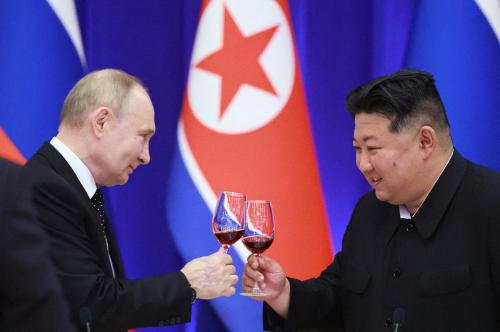During the extended conversation between President Obama and China’s President Xi Jinping, the topic of a “new pattern of major-power relations” is sure to come up. Xi will be the one to raise it, because he and his predecessors have been calling for a “new pattern” in recent years. Obama will be ready with some sort of response, because his senior officials have already but generally endorsed the idea.
“New pattern of major power relations” is one of those phrases that Chinese leaders initiate, both as a tool to bring coherence to their increasingly unwieldy system and as a means to engage their foreign counterparts. The concept seems arcane, but it could have profound strategic significance – if it gains some content.
That China is focused on a “new pattern” reflects its concern about the old pattern. That pattern, in the Chinese understanding, is that when a previously weak country quickly accumulates power, it ends up challenging the existing international order and the principal countries that defend that order and then finds itself in perpetual conflict and major war.
China today does not wish to repeat the old pattern. It benefits a lot from the international system that the United States created after World War II, even if it dislikes some of the rules and the U.S. forward deployment in East Asia, its home region. And Beijing understands that it is far from ready to fight a war with America. So it’s a good thing that the Chinese are “using history as a mirror” and seek to understand how the dynamics of the past might hurt their national interests in the future. As long ago as 2006, official Chinese television did a documentary series “The Rise of Great Powers” on this phenomenon of power transitions. And the United States, the defender of the current international order, is right to welcome China’s desire to avoid the tyranny of history.
The problem is that the “new pattern” idea is so far just a slogan. It has no content. Among the many questions that would have to be addressed in order to infuse the concept with content are the following:
- What in fact was the old pattern of major power relations? Was it simply a case of an irresistible forces meeting an immovable obstacle over and over again? Or was something more complex going on to produce major conflict and war?
- In the current era, who are the major powers? China clearly has itself and the United States in mind. But what about Japan? What about Germany, Britain, and France, or the European Union as a whole? What about Russia, India, and Brazil? One can only figure out the pattern when one knows the players.
- What is the relationship between the major powers and Tier 2 powers? South Korea, South Africa, and Israel come to mind.
- How should major powers manage their relations in the complex situation where they all are present in the same region, where conflicts of interest are most likely? In East Asia, for example, China, Japan and the United States are the key actors.
- What issues will be the substantive heart of the new pattern? Is it the relatively easy global issues which are ripe for multilateral cooperation? Or will it be the truly hard issues that threaten the greatest danger to international peace and security?
- Should the new pattern be formed by identifying a set of over-arching principles (probably the Chinese presence) or to build the pattern by learning lessons from interaction on specific issues (probably the American inclination)?
Presidents Xi and Obama will not answer these questions and define the “new pattern” at Sunnylands. That’s not the purpose of their meeting. But they have a unique opportunity to agree that this concept is important (which it is) and to initiate a process to invest it with serious content (which they should).


Commentary
Obama and Xi at Sunnylands: A New Pattern of Relations?
June 4, 2013